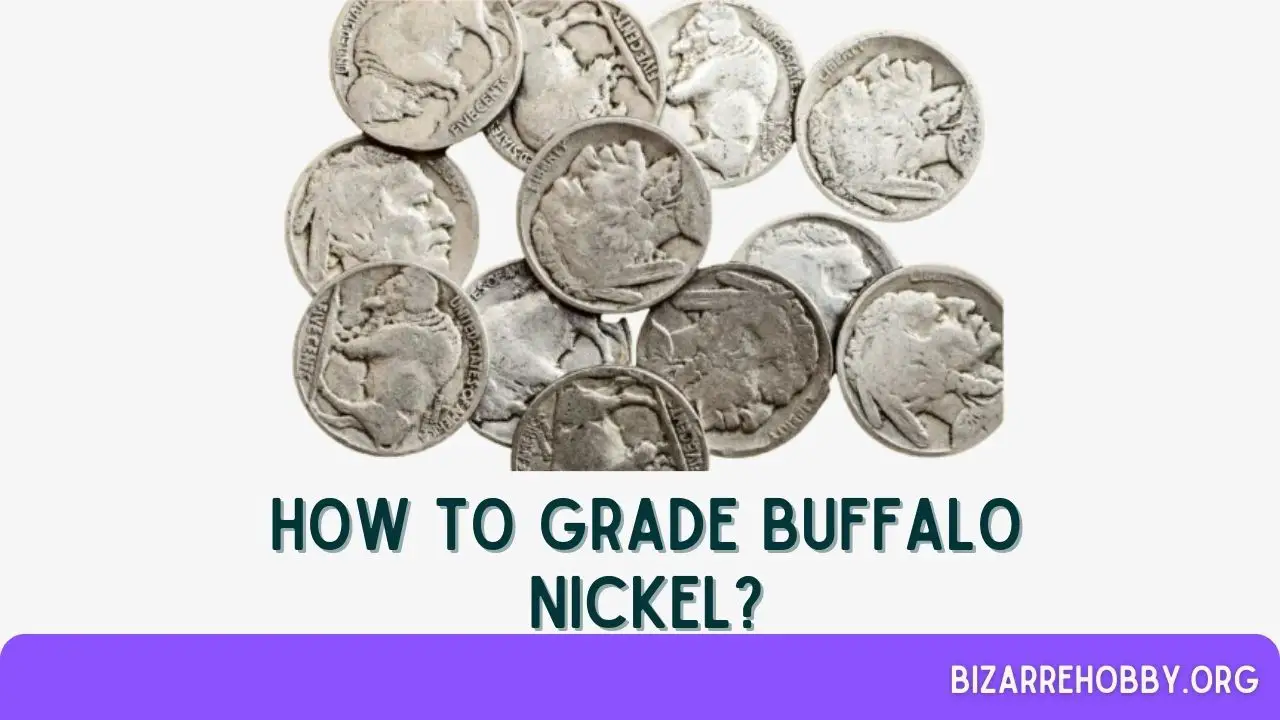Accurate coin evaluation is essential for numismatists to determine the true value of their collections. Properly grading Buffalo nickels involves considering their age, condition, and various other factors. While self-evaluation is suitable for coins of lower quality and value, professional grading is recommended for older, rare, or error coins to maximize their auction potential.
Table of Contents
Grading Standards for Buffalo Nickel
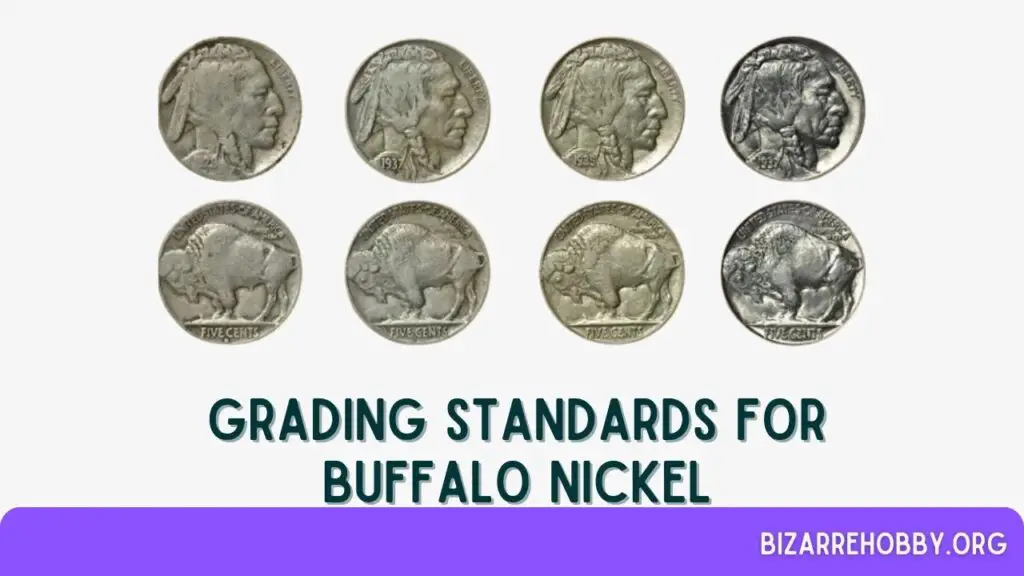
When collectors discover a new coin, the initial step is to assess its quality and estimate its grade and value. However, seasoned collectors understand that professional appraisals yield the most precise evaluations and highest auction prices.
For American coins, the ANA (American Numismatic Association) Grading Standards are the most authoritative guidelines. This comprehensive resource details the criteria for grading coins of all ages and conditions, including proofs and regular strikes, ensuring accurate assessments of your Buffalo nickels.
Understanding Grades for Buffalo Nickel
Buffalo nickels, first minted in 1913 and produced until 1938 before being replaced by Jefferson nickels, present unique grading challenges compared to other American coins. This is particularly true for nickels minted in Denver and San Francisco between 1917 and 1927, which often have indistinct high points that complicate accurate grading.
To address these challenges, the ANA (American Numismatic Association) has provided guidelines highlighting dates with uneven strikes and weak details. Key areas to examine include the Native American’s braid, the date, and specific parts of the buffalo, such as its head, horn, shoulder, and tail.
One of the most problematic features is the buffalo’s horn, which is frequently missing even on many mint state coins. Historically, this caused confusion because a fully visible horn was a criterion for a Very Fine grade. The ANA has since updated its guidelines to account for this issue, allowing for coins with an incomplete horn to still be considered mint state, albeit at a lower grade.
These adjustments ensure that even poorly struck but unused nickels can be accurately graded, reflecting their true condition and value.
Details of Buffalo Nickel
| Specification | Detail |
|---|---|
| Face Value | Five cents ($0.05) |
| Compound | Cupronickel alloy |
| Coin Weight | 0.176 ounces (5 g) |
| Coin Diameter | 0.835 inches (21.2 mm) |
| Coin Thickness | 0.077 inches (1.95 mm) |
How to Grade Buffalo Nickel?
Buffalo nickels often exhibit uneven wear, and even mint state coins can have defects. One common issue is the poorly struck buffalo horn, which requires careful consideration during grading.
Additionally, these five-cent coins are prone to quick wear and tear, making the date, denomination, and mint mark difficult to read over time.
1. About Good (AG)
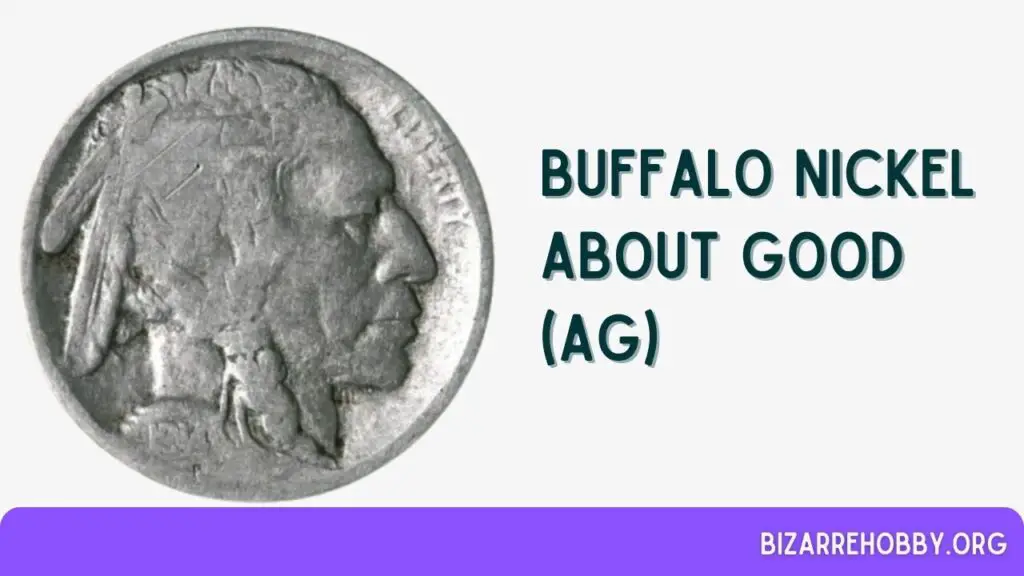
Coins in this grade show significant wear, making them less desirable for collectors. Inscriptions are barely legible, and images appear more like outlines than detailed portraits.
- Obverse: The outline of the Indian is visible, but the finer details that make the coin attractive are missing. The date and LIBERTY are weak and blend into the rim but remain readable.
- Reverse: The buffalo design is heavily worn, lacking detail. The animal’s head and body are flat, and the inscriptions, though smooth, are still somewhat legible.
2. Good (G)
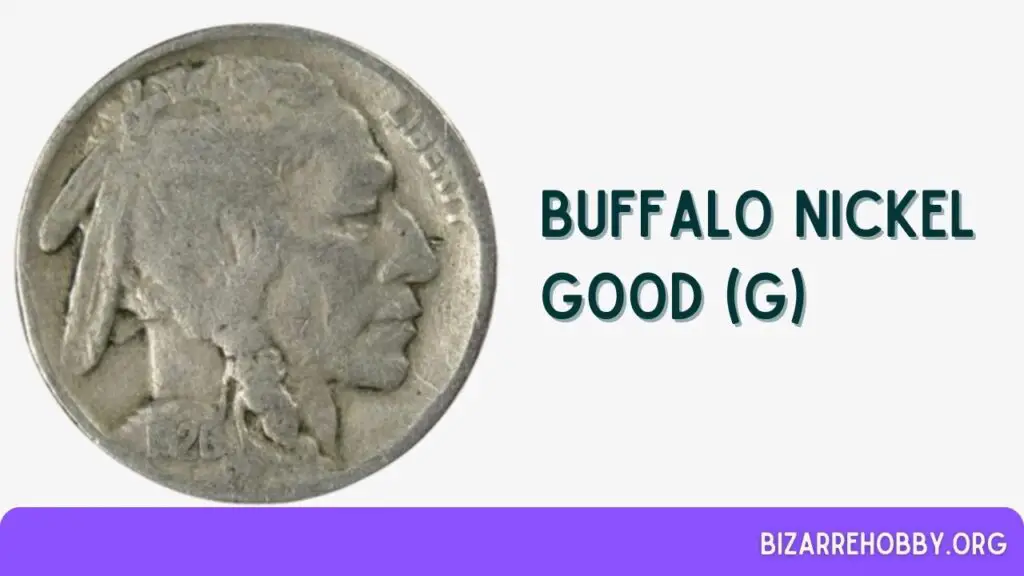
While collectible, Buffalo nickels in this grade are heavily worn. All legends and the date are legible but appear flat. The rim shows wear but is mostly intact.
- Obverse: Fine details are erased due to heavy wear, but deeper recesses like feathers and hair on the Indian’s head are still visible. The date is readable, and LIBERTY is partially merged with the rim.
- Reverse: The buffalo’s body is flat, with crucial details on the head and horn missing. Typical elements on the shoulder and back are worn out. Inscriptions are readable but touch the rim in some spots.
3. Very Good (VG, VG8, VG10)
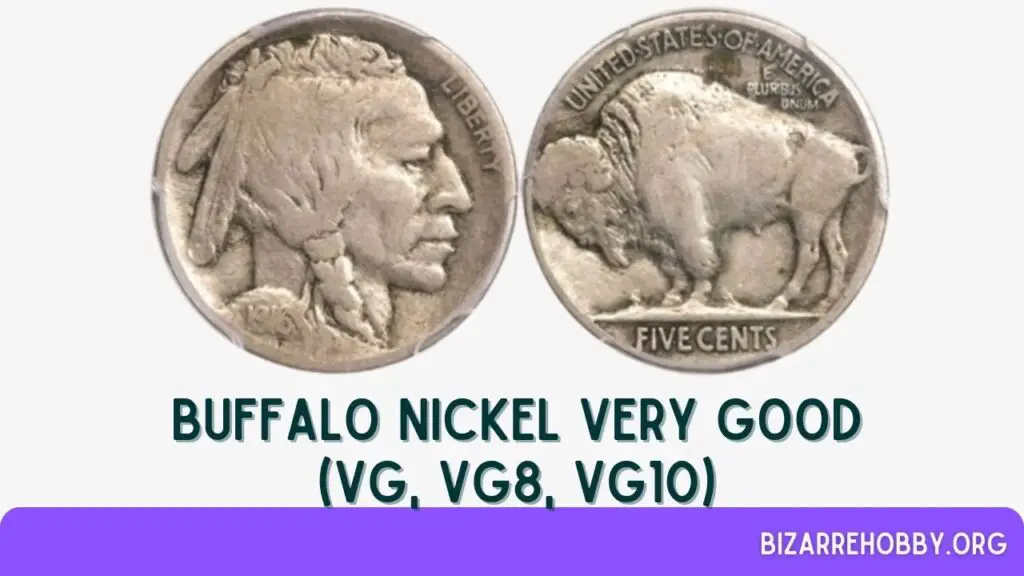
Nickels in this grade are well-worn but retain recognizable designs with defined significant elements, though they are flat and missing many desired details, especially at the highest points.
- Obverse: Hair outlines along the Indian’s cheek and temple bone are visible. LIBERTY is fully visible but partially merged with the rim, and the date is complete.
- Reverse: Details on the buffalo’s head, including the horn, are visible but flat. Some parts on the top of the animal’s body are discernible, and inscriptions are legible.
4. Fine (F, F12, F15)
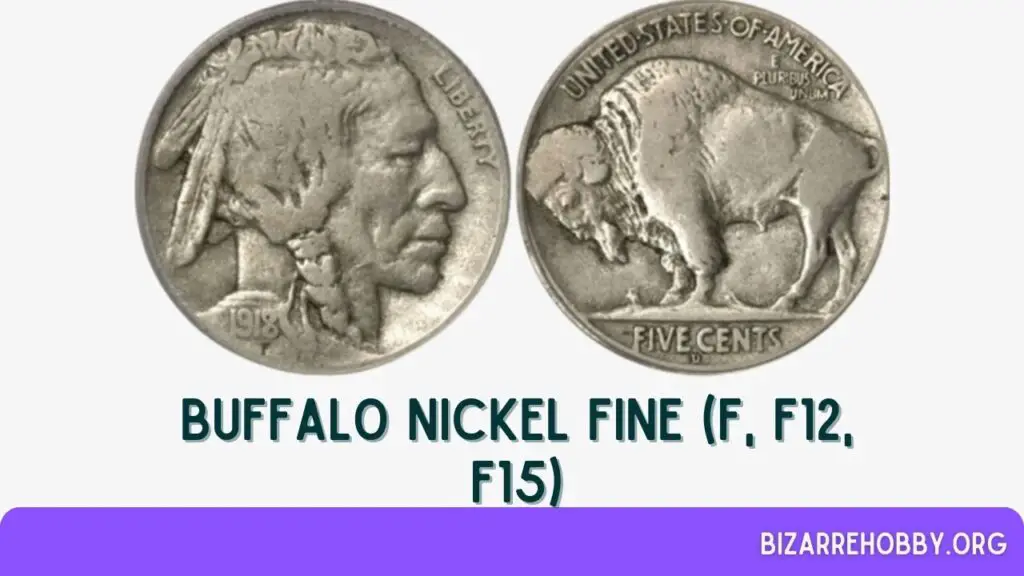
Coins in this grade are more desirable to collectors, especially those from the early minting years, which can be surprisingly valuable despite their moderate grade.
These nickels exhibit even wear across the surface, with prominent major design elements, including about three-quarters of the buffalo’s horn. The lettering is clear and the rim is intact.
- Obverse: Approximately 75% of the details in the Indian’s hair and braid are visible, with a clearly defined cheek and hair. The hair above the braid shows a few separated strands despite overall flatness. The date is complete, and the letters in LIBERTY are still plain, though partially merged with the rim.
- Reverse: Key features to examine include the horn and tail. Although smooth, about three-quarters of these parts are visible, including a solid horn base. Significant details along the bison’s back are also discernible. The fur on the head and front leg is flat, and the hip roundness merges with the tail tip. All inscriptions are bold and readable.
5. Very Fine (VF, VF20, VF25, VF30, VF35)
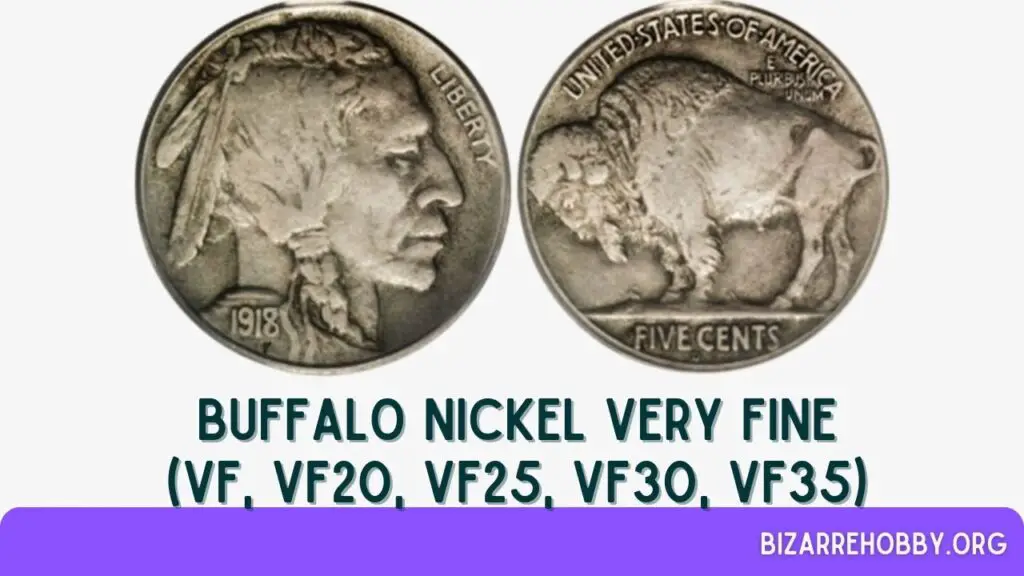
These coins show moderate to minor wear on the highest design points, but the lower areas are only slightly flat, maintaining the coin’s attractiveness.
- Obverse: The Indian’s cheekbone is still flat, but the hair is almost fully detailed. The braid and feathers in the hair are partially worn but remain sharp with recognizable main details.
- Reverse: The buffalo’s horn is nearly complete, though the head lacks full detail. The tail, front leg, and hip are visible but flattened.
6. Extra Fine (EF40, EF45)
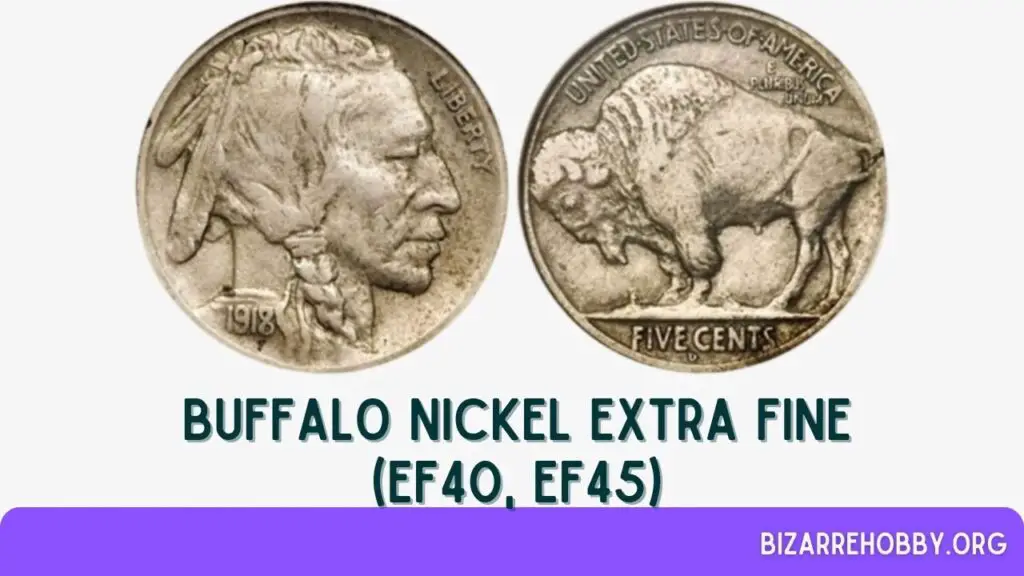
These coins exhibit slight wear on the highest points, but most details are well-defined and sharp. Traces of mint luster may still be present due to minimal metal loss from the surface, making these coins highly collectible.
- Obverse: Wear is noticeable on the hair above the braid, near the cheekbone, and on the temple. The hair ribbon and braid are almost complete despite slight wear. The date is bold and fully raised, with all digits entirely recognizable.
- Reverse: The horn and tail end are smooth but complete with all visible details. Light flatness is present on the highest points of the buffalo’s back, hip, and thigh. The fur above the horn is smooth, but many elements remain on other parts. Inscriptions are fully readable, and the coin rim is complete.
7. About Uncirculated (AU50, AU55, AU58)
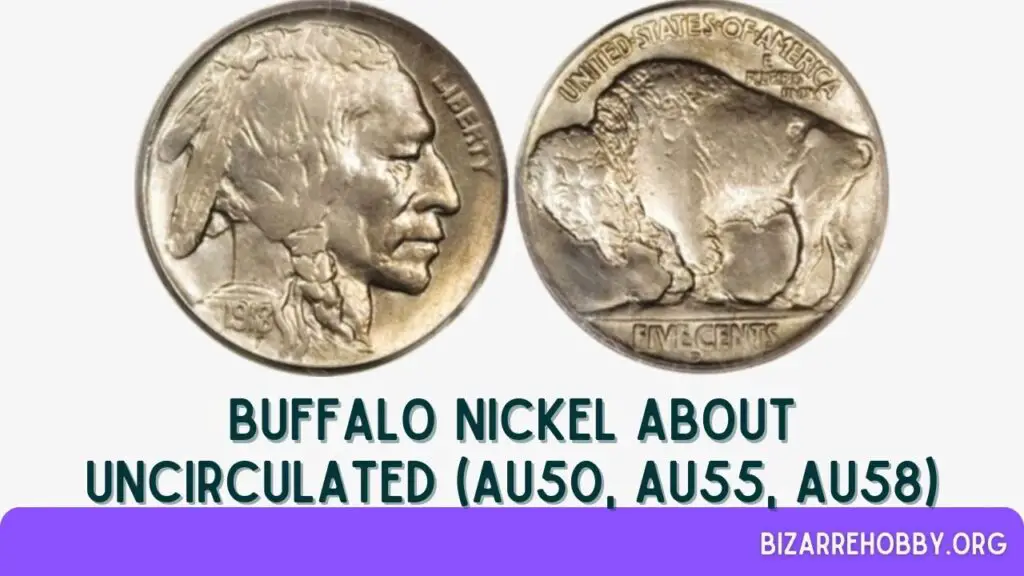
These nickels show only minor traces of wear on the highest points due to limited circulation. At least half of the mint luster remains over the well-preserved surfaces.
- Obverse: Slight wear is visible on the highest points of the Indian’s cheek, hair, and the top of the braid. These coins are shiny with numerous details and an appealing appearance, making them highly collectible.
- Reverse: Most of the reverse design is complete, with minor wear on the bison’s hip, shoulder, tail, and hair around the horn. Other design elements are well-defined and bold, with flawless inscriptions.
8. Mint State (from MS60 to MS70)
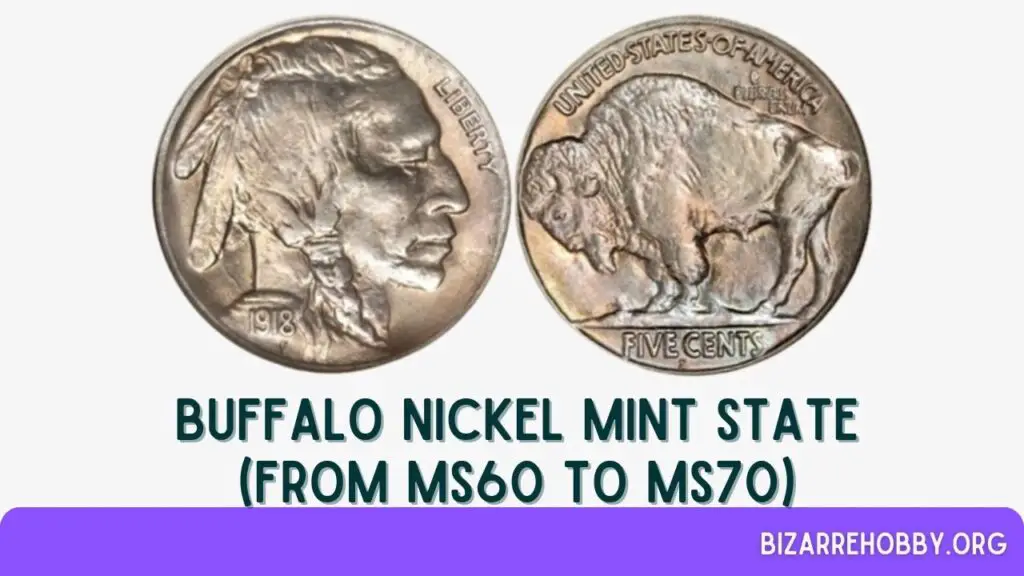
Uncirculated Buffalo nickels are in excellent condition, with preserved design details and mint luster on both surfaces. Differences between subgrades include slight changes in metal color and texture smoothing on the highest points. Some pieces may have bag marks, which slightly detract from their perfection despite being unused and protected.
Final Thoughts
Grading Buffalo nickels accurately is essential for determining their true value and ensuring they are properly appraised. By understanding the specific grading standards and recognizing the unique characteristics of these coins, collectors can make informed decisions.
Whether you are a novice or an experienced numismatist, following these guidelines will help you accurately grade your Buffalo nickels and potentially increase their value at auction.
